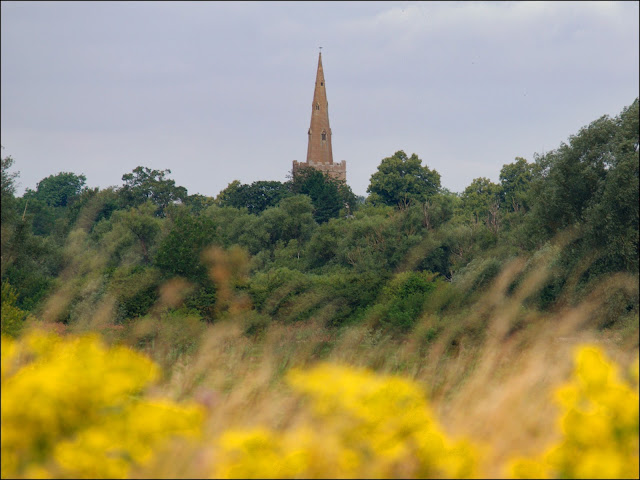Lets say this straight away....
....most of the fens are not what the majority of people would consider beautiful. Big flat fields are farmed in the modern way with little space for nature. If the electricity company want to put up a line of pylons then no one will object, certainly not on grounds of desecrating a visually appealing landscape. And there are miles of landscape like the scene above.
When I was at school Cornelius Vermuyden and those who drained these wetlands were considered heroes of a sort; draining the peat and opening up these unproductive marshes for agriculture. Now it's beginning to look like a huge mistake. The peat dried out and within a couple of centuries simply blew away in the wind, till now there's barely enough good soil in many places to support arable farming.
The area in the above photo is called Adventurers' Fen, land which was given to those who "adventured" the capital which made the vast drainage scheme a possibility. Now it belongs to the National Trust and is the scene of a new "adventure" as they attempt to return it to something like its original state.
If they succeed - and the early signs are that they will - then agriculture's loss will be nature's gain. The level of success will depend on the size of the area which can be reclaimed and the various conservation bodies are thinking big.
Although I'm in a hopelessly outnumbered minority I find these reclaimed areas are very beautiful (though I even find the square fields and straight concrete roads of the farmland hold an inexplicable attraction to me).
Of course, beauty itself is a slippery concept, varying not only from person to person but also over time. Before Wordsworth and the other Lakeland poets had their say the mountains of Cumbria were usually described as "horrid", which meant places to be feared and avoided. But their poems opened our eyes to their delights. Wordsworth himself wrote fierce letters complaining about the new fad for painting cottages white, much preferring the colour of the natural stone. Now everyone loves the little white farmsteads dotted over the green hills.
Wordsworth's rhyming led indirectly to our upland regions becoming National Parks while the lower, flatter lands were ignored till the recent designation of the New Forest and Norfolk Broads.
If an area's importance for wildlife was being considered rather than the scenic ideals of the Romantic movement then mudflats, estuaries, woodlands and reedbeds might be higher on the list of landscapes worth preserving. We seem to be slowly coming around to this way of thinking though it's rare indeed to see anyone out photographing or sketching around here, unless they are photographing birds through a long lens.
Government agencies also seem to have an ambivalent strategy towards these lowland areas; they agree to the protection of relatively small areas, while seeing little scenic or natural value in the rest of it. Scenically a line of pylons or a windfarm has a huge impact on such a flat area, and nature really needs the protected areas to be connected by a more sympathetic type of farming.
Having said all that, now that the nesting season has finished, the Environment Agency are out clearing the lodes (drainage channels). And this particular lode is part of the system which maintains water levels in the Sedge Fen. OK, time to stop thinking so much and instead just enjoy one of the newer spectacles of the fen.
Konik ponies. They were brought here to graze the vegetation and help to maintain the mosaic of habitats. They live a semi-wild existence here on Bakers' Fen, Burwell Fen, Adventurers' Fen and parts of Little Fen, though they are checked every day by the National Trust who manage the area.
We met and chatted with one of the staff who was on her way to check on the Highland cattle, but who couldn't resist stopping by to have a look at the Konik herd and this year's foals.
I think she said there were 70 or 80 ponies in the herd. Like all grazing animals they attract bothersome insects during the warmer months - and a retinue of Starlings only too happy to help out with grooming....
Take care.














































